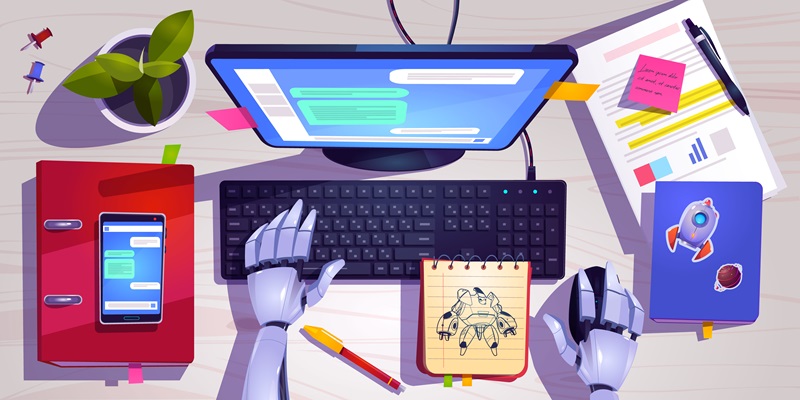The rapid advancement of artificial intelligence (AI) has sparked a slew of ethical inquiries, particularly regarding the use of copyrighted text for training AI models. As we continue to witness the evolution of AI technology, striking a balance between fostering technological growth and safeguarding intellectual property rights becomes ever more pressing. With AI’s growing capabilities, the use of large datasets, often laden with copyrighted material, is pivotal to its development, leading to profound and complex ethical dilemmas.
The Role of Copyrighted Text in AI Training
To develop highly efficient AI models, particularly language models like GPT, it is imperative to provide them with extensive textual data. These training datasets encompass an array of textual sources, including books, articles, and online content. However, a considerable portion of these texts fall under copyright protection. Authors, journalists, and artists who generate these texts depend on copyright laws to protect their intellectual property and to manage the use and distribution of their work. The use of copyrighted material in AI training warrants deep ethical analysis due to its broad implications.
A core issue emerges from AI companies’ frequent use of copyrighted materials without obtaining proper licenses or approvals. These companies often justify their actions through the doctrine of “fair use.” Yet, ethical concerns exist beyond mere legal considerations; what might be legally allowable is not necessarily ethical. The unauthorized use of copyrighted text challenges the moral principles that form the cornerstone of intellectual property laws, thus raising questions about the fairness and integrity of such practices in the AI industry.
Moral Issues Surrounding Creator Rights
Copyright laws were established to protect the rights of creators, ensuring that they are rewarded for their work. When AI models use copyrighted texts without proper authorization, it not only denies creators their due compensation but also undermines their control over their intellectual output. The potential for AI models to produce outputs that closely mimic the original copyrighted content furthers the risk of what can be perceived as intellectual theft, thereby infringing upon the moral rights of creators.
Transparency plays a pivotal role in this ethical debate. Many AI companies obscure the sources of their training data, thus preventing creators from understanding whether their work has been used without consent. This lack of transparency erodes trust between creatives and the AI industry and calls into question the moral basis of AI development practices. An ethical approach necessitates full openness about sources and practices, aligning AI development more closely with the principles of fairness and respect for the creative community.
Impact on Creativity and Innovation
The unauthorized use of copyrighted material holds the potential to constrain creativity within the broader creative community. If AI models persistently generate content reminiscent of pre-existing works, the motivation for human creators to generate new, original material may diminish due to the perceived risk of idea appropriation. This could stifle innovation, as the unique contributions and diverse creative inputs from human minds become overshadowed by AI reproductions of existing works.
Additionally, AI models trained on copyrighted works reproduce the biases and patterns ingrained within their training data, thereby limiting the emergence of diverse and novel content. The over-reliance on copyrighted texts for AI training hampers the ability of these models to introduce fresh perspectives and innovative ideas into the industry. Instead, there exists a tendency to replicate familiar narratives and styles, which inadvertently curtails the growth of an inventive and vibrant creative ecosystem.
The Need for Responsible AI Development
To navigate these ethical quandaries, it is essential for AI companies to commit to responsible development practices. This entails seeking explicit permission from authors before incorporating their work into AI training datasets and ensuring absolute transparency regarding data sources. Establishing standardized regulations and guidelines can further help in safeguarding creator rights and holding companies accountable for any unauthorized usage of copyrighted material.
Such measures promise to lay the groundwork for trust and equity within the AI industry. By compensating creators fairly and maintaining transparency about data use, AI companies can foster a culture of openness and respect. This approach does more than just protect intellectual property rights; it actively encourages the continued growth of innovation and creativity, ensuring a dynamic and diverse creative landscape that benefits all stakeholders involved.
Balancing Technological Innovation and Ethical Practices
The swift progress of artificial intelligence (AI) has ignited numerous ethical questions, especially about using copyrighted text to train AI models. As AI technology continues to evolve, finding the right balance between encouraging technological advancement and protecting intellectual property rights becomes increasingly important. AI’s growing capabilities often rely on large datasets filled with copyrighted material, which are vital for its progress. This scenario leads to deep and intricate ethical dilemmas.
The debate revolves around whether using copyrighted works without permission for AI training infringes on creators’ rights and devalues their work. On the other hand, restricting access to such data could stifle innovation and slow down advancements in AI. Companies and researchers must navigate these challenges carefully, ensuring they respect intellectual property while fostering new technologies. Policymakers also play a crucial role in this discussion, as they need to develop regulations that protect creators’ rights without hindering AI’s potential. Balancing these competing interests is key to the responsible advancement of AI.

